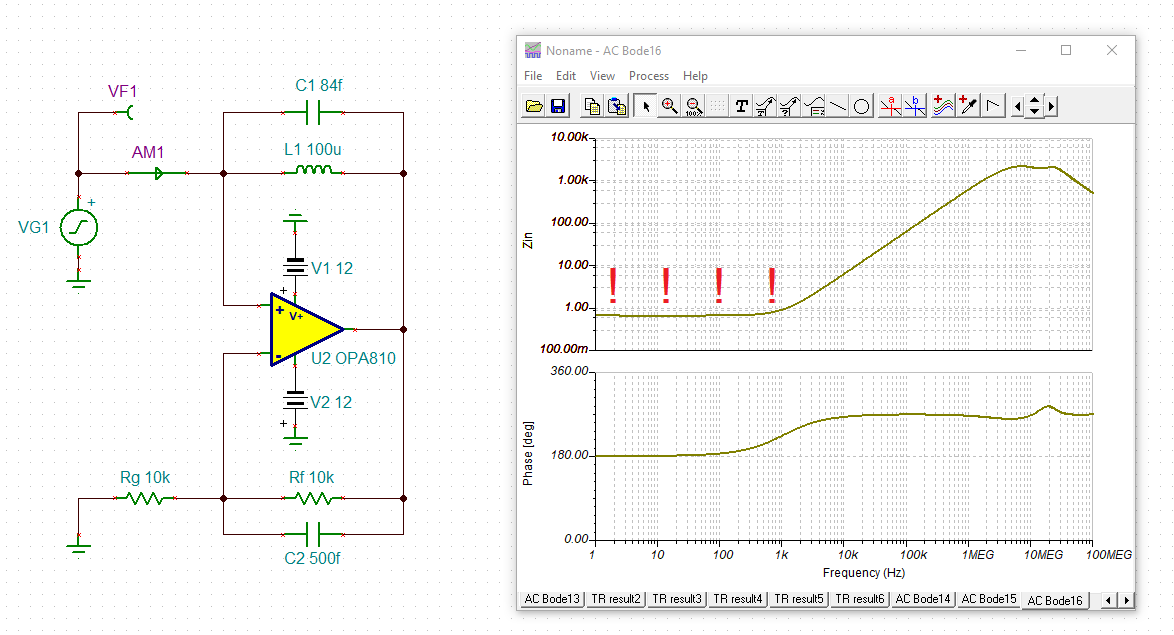Hi,
We are designing an 'Negative impedance converter (NIC)' circuit to realize an negative inductance for an EMI filter application.
To achieve the desirable negative inductance two of the methods were proposed in Wikipedia using operational amplifier.
I would like to analyze the stability of the NIC circuit with OP-AMP. I referred all TI Videos & documents related to OP-AMP stability based on Rate of closure technique. It is more helpful.
In these stability papers an 1TH inductor and capacitor is added for analysis, but for an NIC circuit the opamp is connected to both negative feedback as well as positive feedback.
Following are the list of calrifications/solutions needed on simulating NIC stabiltiy analysis.
a) I am expecting my op-amp to remain stable till 25MHz, but I hope the presence of inductor will affect the stablity. How to analyze it.
b) Whether It is better to go with an inductor in an OPAMP circuit or an alternate circuit using capacitor which mimic as negative inductance (Please refer Wikipedia for Circuit details)
c) How to make an NIC circuit to remain stable till or above 25MHz.
d) How to measure open loop gain for NIC circuit having both positive and negative feedback circuit


 Circuit showed in figure is negative impedance converter where 'Z' mentioned in figure is inductor
Circuit showed in figure is negative impedance converter where 'Z' mentioned in figure is inductor


